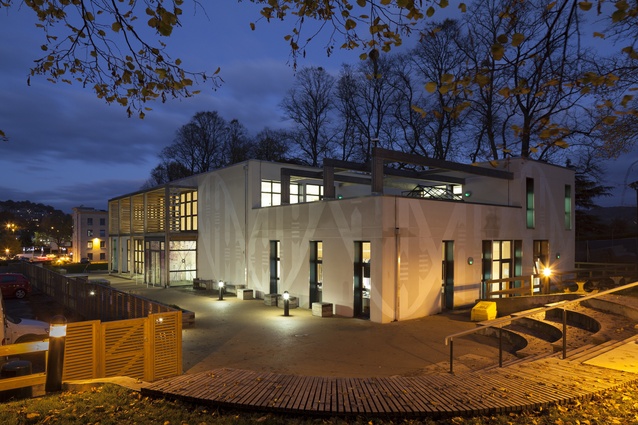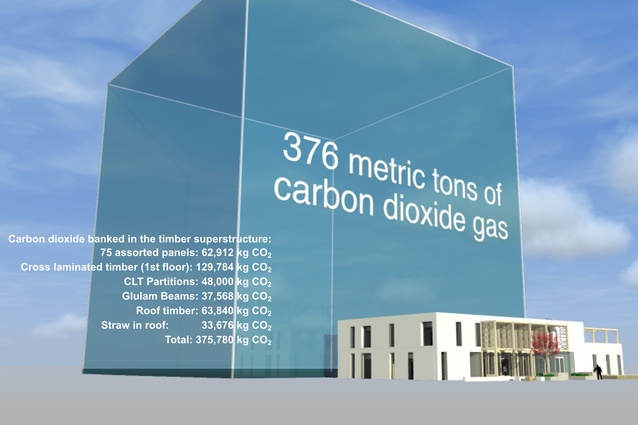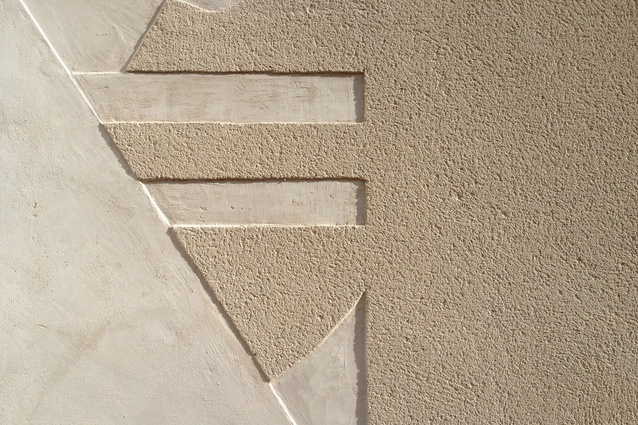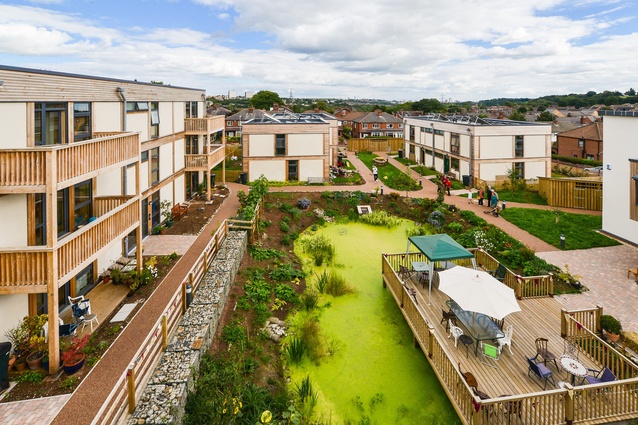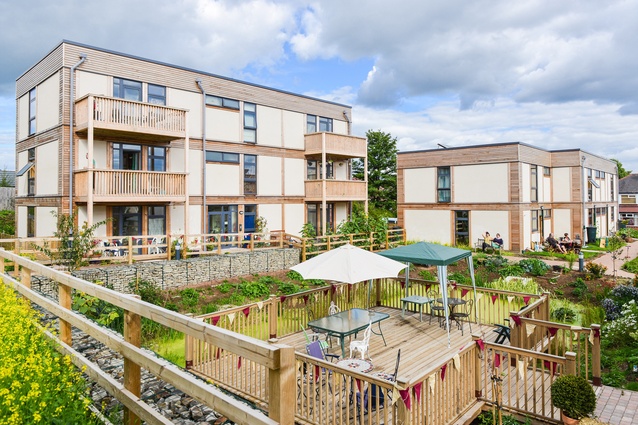Building organically
Craig White is a Bristol-based architectural practitioner and renewable building material entrepreneur and is a founding director of White Design and ModCell. He has over 25 years experience in architectural practice in the UK and Europe and has been involved in low energy and sustainable design since the 1980s.
Craig is one of the keynote speakers coming to Canterbury in March 2016 for the International Straw Building Conference: Natural Materials in the 21st Century.

Amelia Melbourne-Hayward: What is the history of straw bale building as an emerging trend – how long has it been around for, and where did it start?
Craig White: Organic materials such as straw and reed have been used in construction for millennia. The invention of the baling machine in 1872 used twine to secure the straw in rectangular units. This naturally led to people using these straw bricks to form the components of a walling system.
The system emerged with most rigour in America on the plains of Nebraska and combined limited timber supply with straw bales to create a systemised method of construction known as the Nebraskan method. As such, straw is a readily available by-product of growing cereals as well as being cost effective. The idea of prefabrication of straw panels has been around almost as long as the Nebraskan method of construction, with patents being lodged for such systems as early as 1880.
Up until the latter part of the 20th century they remained firmly lodged as ideas with no significant commercial application. The ModCell system of prefabrication developed by us in 1998 was eventually awarded a patent for the system and methodology in 2009. Others have also developed similar approaches to bring straw bale construction into the mainstream.
AMH: What are the benefits (for the environment and socially/economic) of building this way?
CW: Straw is an excellent insulator through the nature of its dry cellulose stalks, the form of which traps air between the stalks within the bale as well as within their internal cellular structure. Straw will conduct heat along its length, but the combination of trapped air and low conductivity provide for an accepted lambda of 0.052 W/(m2K). We have managed to combine these properties into a system of delivery that not only reduces energy consumption, but supports wider social and economic benefits as well.
The need to reduce carbon dioxide emissions from the operational energy use in buildings is becoming more and more pressing as we seek to mitigate the effects of climate change. As we do so, however, the ratio of emissions embodied in the materials we use to make our buildings, compared to operational emissions, will become the next target for decarbonising our built environment.
The whole building ModCell system of construction secured PassivHaus Component Certification in February 2015 using straw as its primary material. The system uses a unique set of renewable materials that use the power of photosynthesis to bank carbon into their fabric. The amount of carbon dioxide banked into the ModCell system is more than is emitted through its manufacture and transportation, resulting in a carbon negative footprint. This unique approach of working within the natural carbon cycle, rather than upon it, means the journey towards a zero carbon built environment is now achievable.
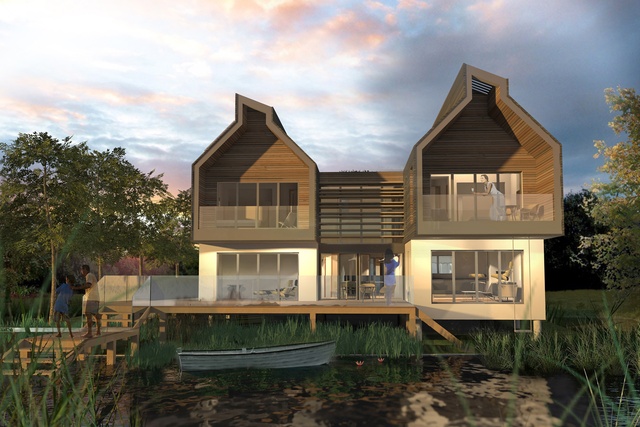
To date the delivery of Off Site Manufacture (OSM) has been constrained by the high capital costs of investment to deliver a systemised method of off-site construction allied with a lack of consistent market pull to sustain the level of throughput required to achieve a consistent return on investment. ModCell has been able to address this by developing a system of construction that removes the need for capital investment required to set up a centralised fabrication facility.
Instead, ModCell developed the Flying Factory system of delivery that establishes an entirely localised means of manufacture, using local skills labour and materials. This method uses Japanese manufacturing principles called KanBan. KanBan is a lean, Just in Time (JIT) system of manufacture that allows ModCell to assemble wall, roof and floor panels near to the project’s construction site.
The Flying Factory system has been used to deliver all of the projects built by ModCell. This unique pop-up, near-site, off-site method of manufacture has proved so successful that its implementation has been adopted by Skanska through a £750k Technology Strategy Board-funded project called Modern Flying Factories. Working with Skanska, ModCell’s Flying Factory system has been used to deliver modular schools for Bristol City Council and is currently being used to deliver 550 modular M&E systems for the Battersea Power Station redevelopment into new apartments.
The system has the additional benefit of creating jobs locally to the project and has even engaged the final building users in the manufacture of their own projects. Most of our buildings have been built in the Flying Factory thus far, as we scale we have also manufactured them in a larger centralised facility with some automation.
In terms of delivering new models of housing ownership, ModCell delivered the award-winning LILAC cohousing project in Leeds. LILAC is a 20 Balehaus project completed in 2013. The cost of LILAC to the community was 20 per cent less than the average price for housing in Leeds and uses 90 per cent less energy than the average for Leeds. LILAC stands for Low Impact Living Affordable Community. It is the the United Kingdom’s first Mutual Home Ownership Society and has a unique funding model to ensure affordability to all of its members.
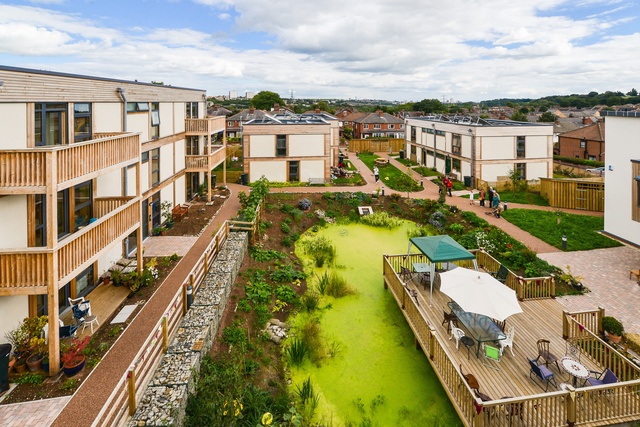
The challenge of housing supply failure has reached crisis level in the UK. The governments response has been to establish a radical and emerging solution, called Custom Build. ModCell and White Design have been selected as a Home Manufacturer for one of the pathfinder government-funded Custom Build projects.
We are one of 5 providers working with Igloo Regeneration and Cornwall County Council on a 60 house site. The project is funded by the Affordable Housing Programme, a £150m fund that supports the development of plot led Custom Build using Modern Methods of Construction (MMC). Over 30 potential home manufacturers submitted to be a provider for this pathfinder and involved ModCell bringing together a delivery team, including architect, engineer and contractor, for a full turnkey Custom Build offer.
There are number of benefits in using straw. It is a bi-product of growing cereals, predominantly wheat, it is a renewable resource, is vapour diffuse, has a very low embodied energy and consequently is low in embodied carbon. Timber and straw also have unique benefits over other materials, they not only have a low carbon intensity, they also have the additional benefit of actually banking carbon into their fabric, which is achieved through the photosynthetic action of carbon dioxide absorption at a molecular level of plants.
AMH: What is the future of construction using these methods and materials, particularly in relation to New Zealand – what is the potential for uptake here?
CW: We have a simple objective to find ways in which the model we have developed in the UK might be repeated elsewhere in the world. We are in active dialogue with partners in Spain and the Netherlands and would be keen to speak to potential partners in New Zealand. The system is designed to be built locally using local skills, labour and materials. All of these are readily available in New Zealand and we are able to support partners in their adoption of the system. Clearly, the system would need to adapt to local markets and context, however, we are optimistic that we can achieve this in most parts of the world.
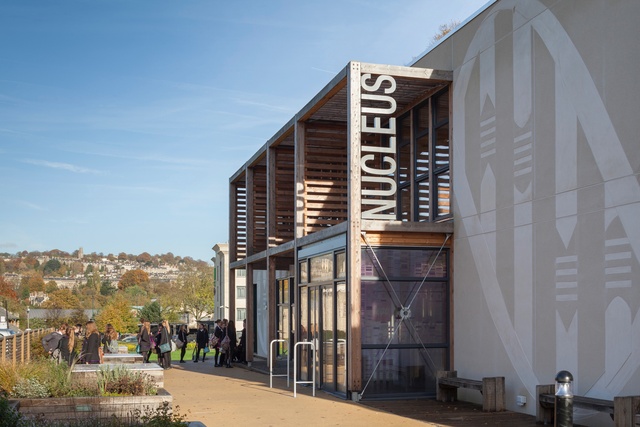
AMH: How are new technologies changing the face of natural building (especially strawbale building)?
CW: In Europe there is an emerging shift towards decarbonisation in all its forms. This ranges from how energy supply at national grid level might be decarbonised to how embodied carbon of materials will be reduced. The use of bio-based, renewable materials which include straw, hemp, maize and other crop byproducts is an expanding area of research. We are currently involved in two major European research projects: ECO-SEE and IsoBio.
ECO-SEE explores how bio-based materials might help reduce negative health impacts by addressing indoor air quality and reducing VOCs using photocatalytic coatings, while IsoBio looks at how pre-treated bio-based aggregates can be scaled for use in construction, which include insulation materials, hygrothermal and moisture buffering materials, bio-based binders and resins, as well as sol-gel treatments to the reduce risk of decay.
We also recently completed another major EU research project called EuroCell.
All three projects explore how bio-based materials can be mainstreamed. Two of the EuroCell outcomes resulted in the ModCell system being certified with:
- Whole building PassivHaus Institute Component Certification. PassivHaus is the world’s most rigorous energy reduction standard.
- TRADA’s QMark certification which allows ‘high street’ mortgages for straw bale homes.
Innovation in this sector is accelerating in Europe and will allow natural materials to used at scale rather than remaining a niche used by the dedicated few.
AMH: What would be a good starting point or tips for architects who have never built with these materials before?
CW: Education, education, education; whether it is embedded into the curriculum of schools of engineering and architecture or in practice through continuing professional development. There are a plethora of books available that range from how self build can be delivered using traditional Nebraskan methods to more recent publications that explore modern methods of construction. There isn’t one single publication that covers everything a designer might need to know. Do your homework, there is no copy and paste specification to be had, so be willing to take risks!

